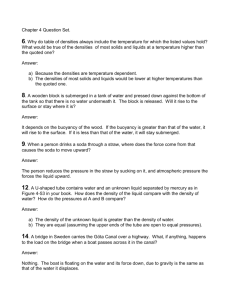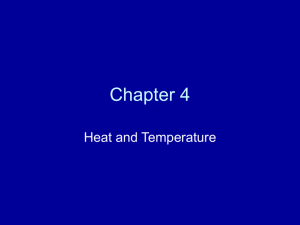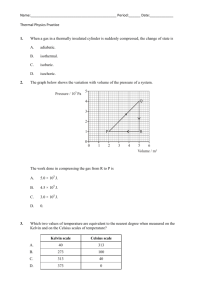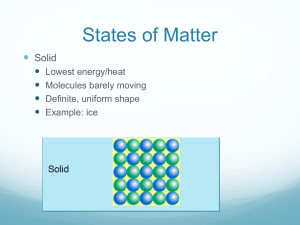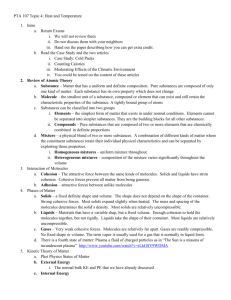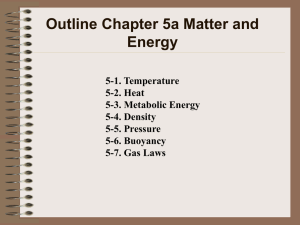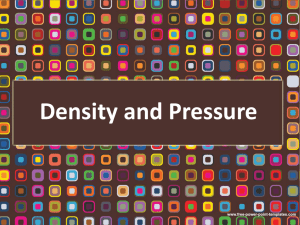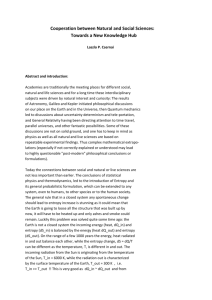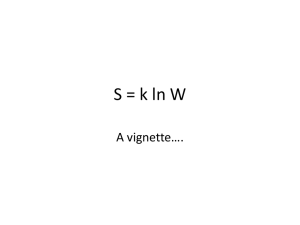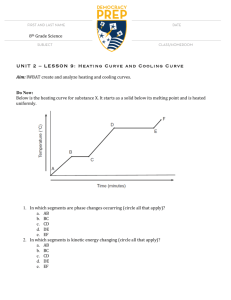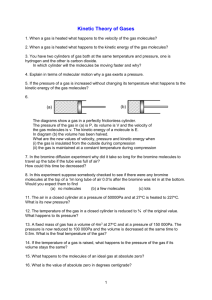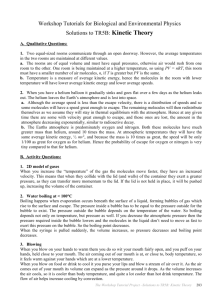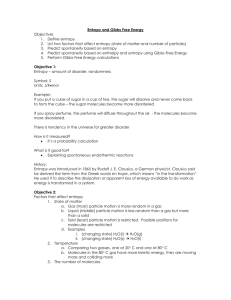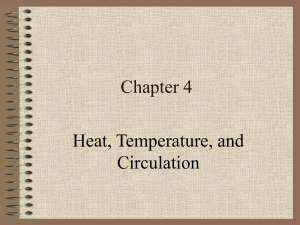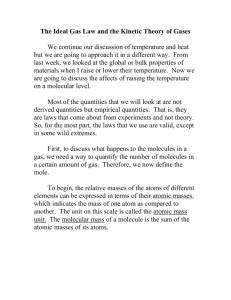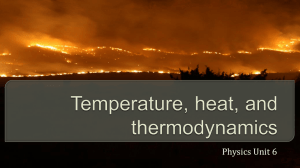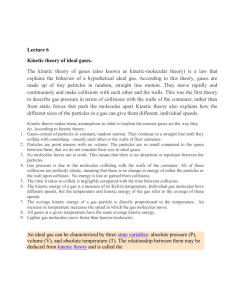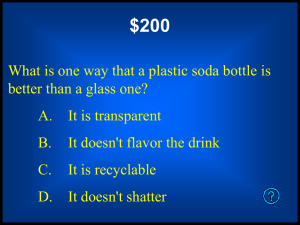Powerpoint slides
advertisement
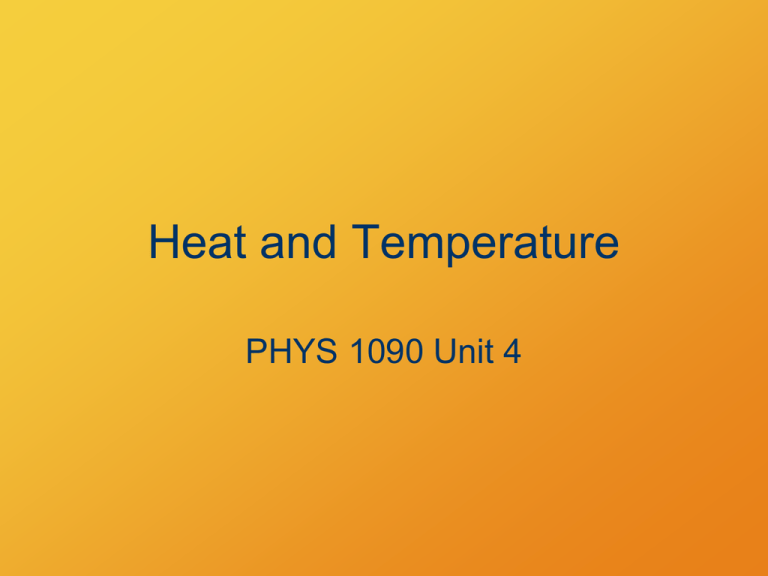
Heat and Temperature PHYS 1090 Unit 4 Put Your Hands Together! (Activity 1) • Doing work on your hands made them warmer. • Adding energy raised the temperature. • Work had the same effect as heat. Mechanical Equivalent of Heat James Joule’s life-long obsession No difference between adding heat to a system and doing work on it. Source: Griffith, The Physics of Everyday Phenomena Heat Units • Joule • Calorie (cal): amount of heat needed to raise 1 gram of water 1 degree C (or K) = 4.184 J. • British Thermal Unit (BTU): amount of heat needed to raise 1 pound of water 1 degree F = 1054.35 J Specific Heat • The amount of heat required to change the temperature of a unit mass of substance. Cp = q mDT – C = specific heat – q = heat added – m = mass of sample – DT = temperature change Another Heat Unit • U.S. Food Calorie: Cal = 1000 cal • Food energy values are often presented in kJ in other countries First Law of Thermodynamics DE = q + w where DE = change in internal energy q = heat input w = work input Kinetic-Molecular Theory • Everything is made of molecules. • The molecules are constantly moving in random directions. • (Absolute) temperature is proportional to molecular translational kinetic energy. • Molecules colliding with objects they contact causes pressure. Absolute Zero • • • • • When molecules have zero kinetic energy Absolute zero = −273.15 °C Kelvin temperature = °C + 273.15 Absolute zero = 0 K 0 °C = 273.15 K Liquid N2 Boil (Activity 2) • More boiled away with cold water • More heat transferred from cold water • Because there was more cold than hot water Warm and Cool Colors (Activity 3) • Dye dispersed faster in warm water. • Why? • Water molecules were moving faster in the warm water. Phase Change (Activity 4) • Melting ice temperature was constant even though heat was being added – Specific heat is infinite? • Boiling water temperature was also constant – Boiling temperature 100°C? Sensing Latent Heats (Activity 5) • Evaporation is a cooling process. • Condensation is a warming process. Phase Changes • Potential energies: Gas evaporate sublime Liquid melt condense deposit freeze Solid • During a phase change, potential energy, not kinetic energy (temperature) changes. • Heating or cooling a changing phase does not change its temperature! Phase Changes • Melting, boiling, freezing, condensing… • Added or removed heat changes the substance’s potential rather than kinetic energy • Water freezes at 0 °C, boils 100 °C • Not all heat transfer is expressed as a temperature change. Heats of Phase Changes • To melt 1 kg water at 0 °C: 335 kJ • To boil 1 kg water at 100 °C: 2,255 kJ Heating Curve for Water Water temperature with heating temperature (C) 200 Water boils 150 100 50 Ice melts 0 2,255 kJ/kg 335 kJ/kg -50 -100 0.0E+00 1.0E+06 2.0E+06 heat input (J/kg) steam Liquid water ice 3.0E+06 4.0E+06 Heat Transfer Mechanisms • Heat transfers between objects by: • Conduction: collisional transfer of kinetic energy • Convection: buoyancy-driven fluid circulation • Radiation and absorption of electromagnetic waves Conduction (Activity 6) • Thermal energy moves through different materials at different speeds. • Conductivity varies with material; solids > liquids > gases Convection • Hot water stayed on top, cold stayed on the bottom • Hot water moved to the top, cold to the bottom (with mixing) Radiation (Activity 8) • Coil heated your hand from afar. • Heating less intense farther away. • Aluminum blocked heat. Radiation • Power output increases as T4. • Objects are heated by absorbing radiation. • Objects are cooled by emitting radiation. Entropy (Activity 9) • Dice moved in either direction with equal probability • Began highly localized Localized Dispersed • Inevitable and irreversible Model of Diffusion • Particles randomly move from high concentration to low concentration – Individual flow either way – Net flow high → low – Equilibrium: uniformity • Energy flows in the same way – Transfer in collisions – Heat flow: high temp → low temp Entropy • A measure of “disorder” • Related to the number of equivalent ways to arrange a system Low entropy High entropy Overall Summary • Particles and energy tend to become spread out uniformly. • Total entropy increases in all processes that actually occur. Drinking Bird • Evaporation from the bird’s head cooled the vapor inside. • This reduced the head pressure to less than in the bottom bulb. • The higher pressure in the bottom pushed the fluid uphill, making the bird top-heavy.

